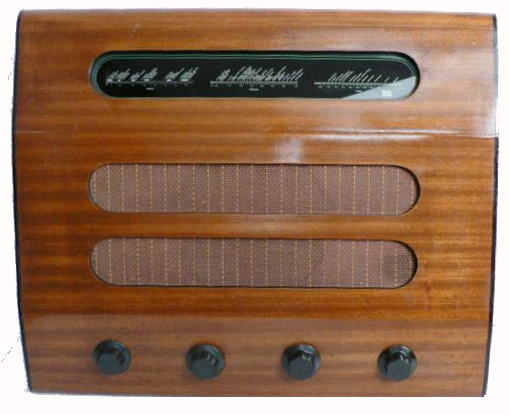
serial Nr.22420056

Murphy A122 Table model valve radio 105-250 Volts AC
50-100Hz. This is a conventional superhet covering long, medium and
short wavebands. This is one of the first iconic radios designed by
Eden Minns (see below) for Murphy Radio after WW2. The long medium and
short wave scales are unusually in line rather than being one above
each other, they are separately illuminated and the three pointers are
solidly coupled together. It has 4 Mazda octal valves plus rectifier:
TH41, VP41, HL41DD, PEN45 AND UU6.
This radio was given to me by the daughter of William Sturdy of
Easingwold who in turn inherited it from his father Arthur who
purchased it in 1947, the year it was introduced. The original price
was � 22.0.0 plus purchase tax. (Purchase tax in 1947 increased
from 33% to 50%)
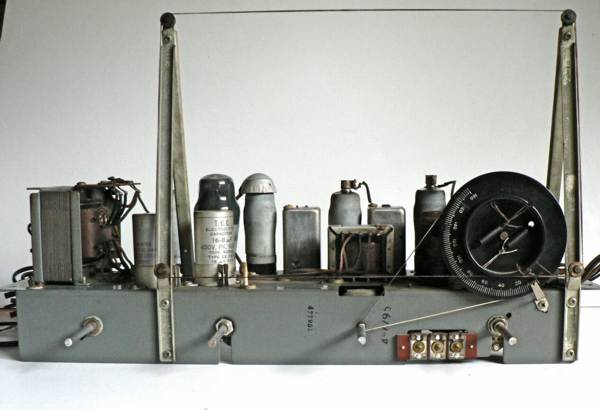
View of chassis
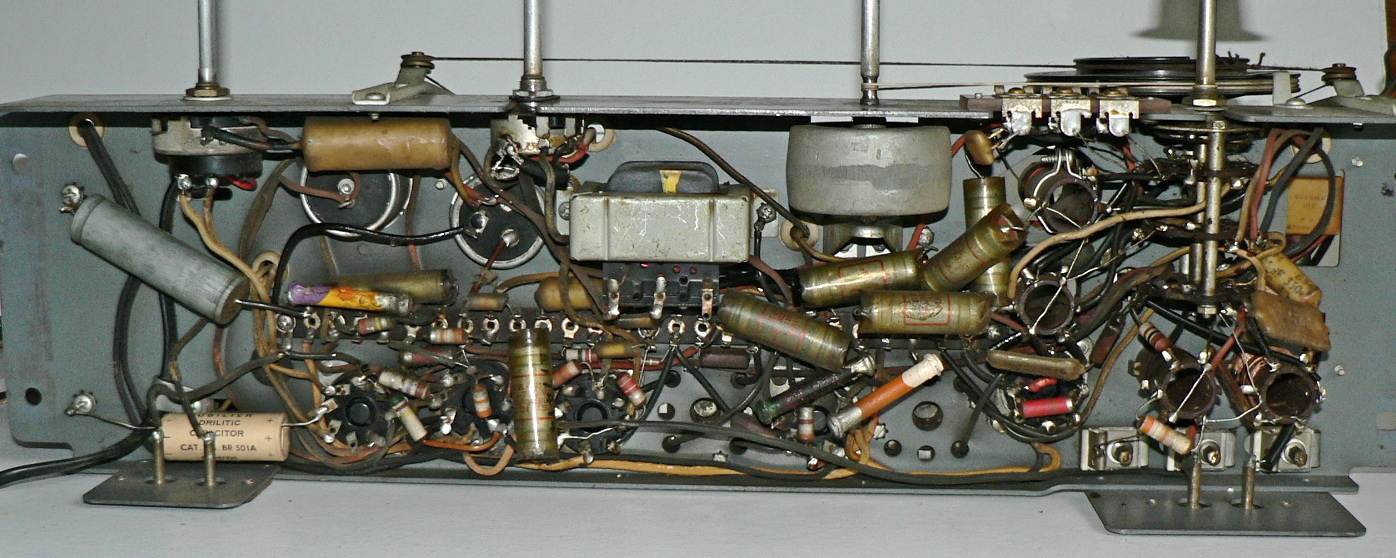
View of under chassis
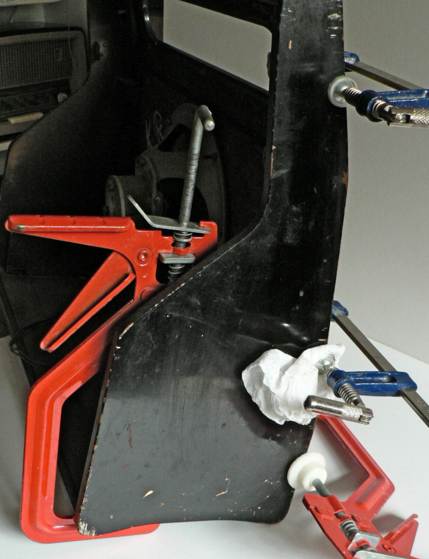
Re-gluing the side panel

View of the glass scale and mounting
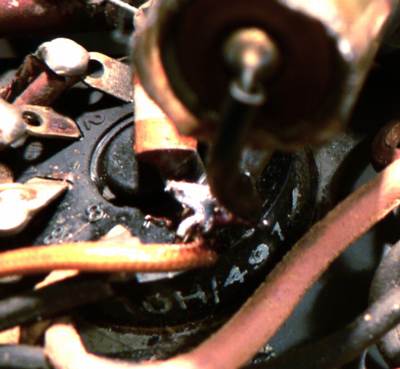
Air Ministry surplus valve holder

Wooden stands to support chassis
With this radio my first job was to clean and repair the cabinet ant the scale mechanism. The polished veneered surface was cleaned with white spirit and minor blemishes filled with shellac varnish. The black painted sides were touched up with black paint. The whole cabinet was then polished with "T-Cut". The underside of the chassis was relatively clean and appears to be without any alteration or repair though the top as one might expect was very dusty and needed work with a toothbrush and pipe cleaners. The aluminium IF cans and tubular capacitors responded well to cleaning with spray carpet cleaner applied with a piece of kitchen paper. The valves all appear to be original but the insulation on the leads to the top caps (grids) was perished so these were replaced as was the flexible lead for changing the voltage tappings on the transformer.
The set was then energised via a variable transformer and the
voltage gradually increased, nothing untoward happened so the radio was
then plugged into the mains. Although the radio produced sound when
first energised, I soon found
that the capacitor connected to the tone control and the electrolytic
bypass capacitor adjacent to the speaker sockets needed replacing. I
also found that the volume control (centre in picture above) only
seemed to be effective when turned almost fully clockwise. I removed
the volume control, took it to pieces, cleaned and lubricated the
carbon track and the wiper and all seemed well. However, as can be seen
much of the wiring is rubber insulated and this had gone very hard and
brittle. When I came to solder the wires back into position the inner
insulation of the screened lead from the wave change switch broke away
and short circuited to the screen. This was not an easy job and I
therefore constructed the supports shown above. I also replaced the
sleeving on a couple of other wires at the same time. Some intermittent
crackling indicated that there might be some bad connection or dry
joint, so the contacts on the wave change switch were sprayed with
"servisol" switch cleaner and the pins on the valves were cleaned and
the bases were each given a squirt of switch cleaner. The radio
is now working well.
Some of the components appear to be government surplus items, the
decoupling capacitors are Sprague manufacture made in USA and rated at
750 volts and the valve holders are marked 10H/491, an Air Ministry
coding. One of the electrolytic smoothing capacitors is dated
September1947 and a few of the other components including the chassis
have been stamped 477414, 477403 or similar which I guess were Murphy
stores or re-ordering numbers.
History
Frank Murphy started Murphy Radio in a rented factory in
Welwyn Garden City and the first radio was produced in the summer of
1930. Murphy wanted his radios to be simple, affordable, reliable and
to look and sound good. The radios although fairly conventional were
always stylishly housed. The cabinets were designed by leading
industrial and furniture designers of the day including R D Russell
and Eden Minns who were on the team of the well renowned
furniture firm founded by Gordon Russell. More information
about the latter can be found on the website describing the museum www.gordonrussellmuseum.org/
Murphy Radio continued in business until 1970, though from 1962 it was
owned by Rank-Bush. Much more information about the firm can be gleaned
from "The Setmakers" A history of the UK radio and television industry.
BREMA 1991. These two websites are also well worth looking at:
www.murphy-radio.co.uk/
and www.classicwireless.btinternet.co.uk/
Detailed technical information on the servicing of Murphy receivers was
only supplied to accredited agents. Presumably this was intended to
ensure that repairs were carried out properly. However thanks to the
efforts of Dave Grant, a Murphy enthusiast I found a diagram here.

